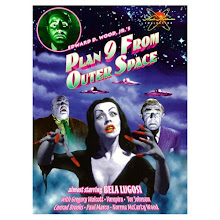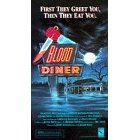by Jason Pyles
First, I’d like to welcome Casey Hicks and Josh Ligairi to our film discussions. I’m happy to have their contributions.
I really like F.W. Murnau. How could you not like him? This German director gave us cinematic gems like “Nosferatu” (1922), “The Last Laugh” (1924) and “Faust” (1926)—and, of course, “Sunrise: A Song of Two Humans” (1927). Supposedly, Murnau was extremely tall, somewhere around 6’9’’ (though many people say he was 7-feet tall), and a closet homosexual. Murnau was killed in a car wreck on his way to Paramount Studios in 1931 and did not get to see the premiere of his last film, “Tabu: A Story of the South Seas.”
I had to smile at the beginning of “Sunrise” when I read on the title card that this story is one we might hear “anywhere at any time.” Then, two title cards later, we’re informed that this takes place during “summertime … vacation time.” It struck me funny that the point was made that this story was universally applicable in its time and setting, then Katherine Hilliker and H.H. Caldwell, who created the titles, proceed to establish the specifics of when it took place. Not a big deal, just peculiar.
Though “Sunrise” is a silent film, there are scenes where sound creeps in, particularly in segment 5 of these YouTube excerpts, where Anses and Indre are scolded with screaming and honking for disrupting traffic. I don’t know much about these insertions of sound to comment intelligently on them, but I can say this: “Sunrise” was made at the height of the silent filmmakers’ powers, just as sound film was clumsily taking the stage. Right around this time period, films like “The Jazz Singer” (1927) were intriguing audiences by implementing scenes demonstrating sound. But I cannot say whether the sound portions of “Sunrise” were inserted when this film was made or later. Does anyone else know?
“Sunrise” is remarkable for a number of reasons: It has flashbacks, like the one of the good old days, when two newlyweds were blissfully in love, when the husband paused with the oxen to shake the baby. It has scenes that depict the characters envisioning or imagining something, like the pre-meditation of pushing Indre out of the boat to “drowned” her. There are a few superimposed scenes, as well as what appears to be a zoomed-in close-up of the villainous bulrushes. (Was that shoot really zoomed? Surely not.) And the bulrushes, by the way, end up being the object of a set-up and pay-off, where the filmmakers have us take note of something earlier in the film that later comes to have additional significance.
The dog in this movie might be the first great animal actor; the pig reaches a little, and overacts. I’m only kidding. I like the shots of Indre in the boat. The camera angle is high, shooting down on her, filling the remainder of the screen with water, giving us the impression that she is hopelessly surrounded by water. It seemed to me that while riding in the trolley car, especially the first time, the passing scenery was back-projected and not actually the goings-on filmed outside the streetcar, right? Could one of you filmmakers explain that famous scene where they wander through the traffic, lovingly looking into each other’s eyes as the cars whiz past them (not the first “Frogger” street-crossing, but the second one).
“Sunrise” is neat because we see the husband change his mind. He sees the aggressive dangers of the not-so-innocent city when contrasted with his sweet, timid, innocent wife. It is a nice touch when they attend the wedding and more or less decide to renew their wedding vows. As they depart the church in place of the real bride and groom, it is as if it’s their own wedding day again.
This films is also unusual in its tone. Much like “Fargo,” “Sunrise” has sobering moments, such as the husband’s deadly threat to his wife on the boat, then it turns to comedy and give us a drunken pig. As the couple rediscovers their love, “Sunrise” turns into a playful, joyous comedy. We have a ghost pig, sliding pig and even a musical dance number. “Sunrise” even gives us a wardrobe malfunction scene that is meant to be humorous. Later the film returns to a solemn tone with its fairly convincing stormy water and what seems to be the fatal loss of Indre.
Yes, with its shifting tones, humor, horror and oddities, I might go so far as to say that the Coen brothers could be considered somewhat “Murnau-esque.” In any case, “Sunrise” is a wonderful film from the semi-silent era and a great recommendation for our discussion on Considering the Cinema. Thanks, Andy. Nice pick.
P.S. I loved the roller coaster, too.






























































1 comment:
Nice post, Jason. I'll have to see what I think about the Coen comparison...I'll (hopefully get a chance to watch the film tomorrow)...been crazy busy...moving into a new apt., and working on our documentary film...
Post a Comment